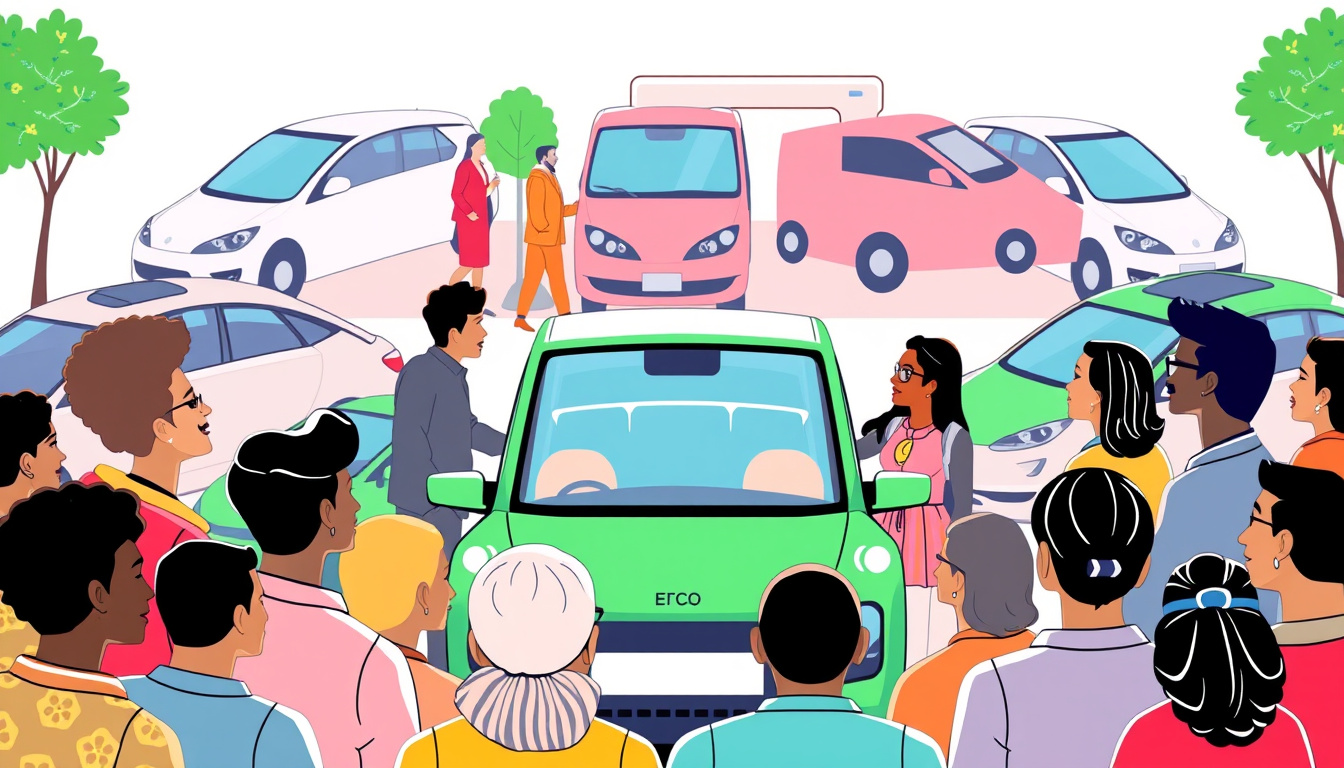As the world moves towards cleaner transportation, the engagement of local communities in Electric Vehicle (EV) transition initiatives becomes increasingly crucial. Ensuring that all community voices—especially those of underrepresented groups—are heard and included in this transition can lead to a more equitable and effective implementation of EV policies and infrastructure.
Understanding Community Needs
Engagement efforts should begin with a comprehensive understanding of the unique needs and characteristics of various community demographics. Communities can be categorized by geography, income levels, and existing infrastructure, thereby identifying specific barriers to EV adoption. Low-income residents, those living in rural areas, and populations that are traditionally underrepresented in technology discussions face unique challenges, including a lack of accessible EV chargers and limited awareness about the benefits of EVs compared to combustion engine vehicles.
Incorporating a diverse range of perspectives through a multifaceted approach—such as conducting surveys, focus groups, and community forums—can better inform transportation policies and initiatives. This up-front effort ensures that the needs of those who will be most affected by changes in transportation infrastructure are considered, ultimately leading to fairer distribution of both benefits and burdens.
Strategies for Community Engagement

-
Leverage Local Businesses and Institutions: Essential community businesses can act as vital points of contact for engaging with residents. Offering incentives, such as rebates for the installation of EV chargers, can motivate local business owners to engage with their communities. For example, utilities can assess community interest in energy efficiency solutions and tailor information to bolster engagement with EV initiatives.
-
Educational Campaigns and Outreach: Many individuals cite lack of knowledge and high upfront costs as significant barriers to adopting EVs. Community-based organizations, educational institutions, and local governments can collaborate to offer informational workshops, training programs, and outreach initiatives. These can focus on the financial benefits of EV ownership, charging station locations, and available incentives—all designed to demystify the transition to electric vehicles.
-
Creating Employment Opportunities: As the transition to EVs necessitates a skilled workforce for manufacturing, installation, and maintenance of EV infrastructure, community engagement can open pathways for job training programs. Collaborating with local colleges and vocational training programs to prepare a workforce can encourage communities to invest in their EV infrastructure, while also revitalizing local economies.
-
Data-Driven Strategies: Utilizing data analytics to identify demographic patterns and preferences can help target engagement efforts more effectively. Companies and community organizations can segment communities to create targeted outreach strategies aimed at those most likely to adopt EVs, as well as those currently underserved by the EV infrastructure.
-
Encouraging Dialogue with Local Governments: Local governments play a critical role in informing and educating their constituents about the ongoing EV transition. By fostering a dialogue between citizens and local officials, community concerns can be more immediately addressed, increasing trust and advocacy for EV initiatives.
Overcoming Challenges
One significant barrier to community engagement in the EV transition is skepticism about the technology itself. Many community members express concerns regarding the purchase price, limited driving range, and insufficient charging infrastructure. Addressing these concerns through consistent and transparent communication can help build trust. Moreover, engaging with trusted local figures or organizations can enhance credibility, aiding in the adoption of EV initiatives.
Furthermore, employing an inclusive engagement framework, as illustrated in the case study from Sonoma County, emphasizes the importance of including diverse voices in the decision-making process. This can lead to a more comprehensive understanding of the challenges faced by different community segments and help avoid the pitfalls of biased engagement efforts that favor certain demographics over others.
Conclusion
The transition to electric vehicles is not just a technological shift; it is a societal transformation that must include the voices of all community members. By prioritizing community engagement and utilizing a strategic, inclusive approach, we can move towards a cleaner transportation future that is equitable and effective. Empowering local voices in adopting EVs can yield significant benefits, not only for the environment but for the overall health and vitality of our communities. As we prepare for significant investments in EV infrastructure, let us work together to create a more inclusive and engaged populace ready to embrace the electric vehicle revolution.
——————————————————
Voltsandvolts.com is a blog dedicated to electric vehicles (EVs). Our blog features articles on EV reviews, stories, tips, tricks, charging infrastructure, and battery technology. Join the conversation and become part of the Voltsandvolts.com community today!
